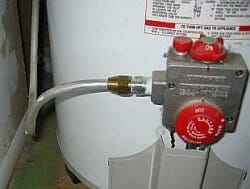Water Heater Straps for Earthquake Safety
Home » Plumbing » Water Heaters »
Hot water heater strapping, also known as seismic strapping, is a crucial safety measure that secures a hot water heater to a structural element. Tank style water heaters are most commonly tightly secured to a surrounding wall or framing to prevent them from moving during an earthquake or other significant movement in the home. This practice is not just a safety precaution but a mandatory requirement in earthquake-prone areas.
Why is Hot Water Heater Strapping Done?
The primary reason for hot water heater strapping is to reduce the risk of water heater displacement during seismic activity. An unsecured water heater can tip over, causing potentially severe water damage, gas leaks, fire, and injury to humans and pets..
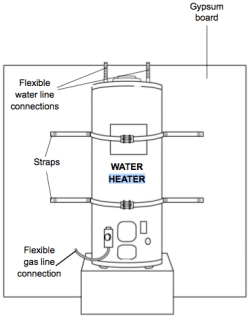
In addition to the obvious water damage that could occur from the entire tank draining out, the shifting of the water heater can cause gas lines to rupture, creating fire concerns. Flexible gas lines should be used for the last leg of connection to the water heater to help mitigate this concern. However, in the event of a complete tip over, or a water heater falling off a raised platform, the gas lines run great risk of breaking. With electric water heaters the conduit can get pulled apart, which can expose live wires.
Water heaters are also heavy (typically 500 pounds or more when filled) so if it gets bumped or tipped over onto a person it can cause serious injury. Strapping helps mitigate these risks by keeping the unit upright and attached to the structure of the home. Additionally, in the event of a disaster, a secured water heater can provide an emergency water supply, assuming the tank remains intact.
A study performed by the Earthquake Engineering Research Centers Program of the National Science foundation examined municipal water supplies after Earthquakes. One very real side effect of water heaters tipping over is that the pipes will be ripped off as well. This will cause a massive amount of water consumption of the municipal supply.
The reason this is such a major problem is that most likely there will also be many fires caused by the earthquake, and the hydrants rely on the municipal water supply system as well. Water spraying out of pipes that used to be connected to water heaters would drastically reduce the overall pressure of the entire water system.
How to Install Hot Water Heater Straps

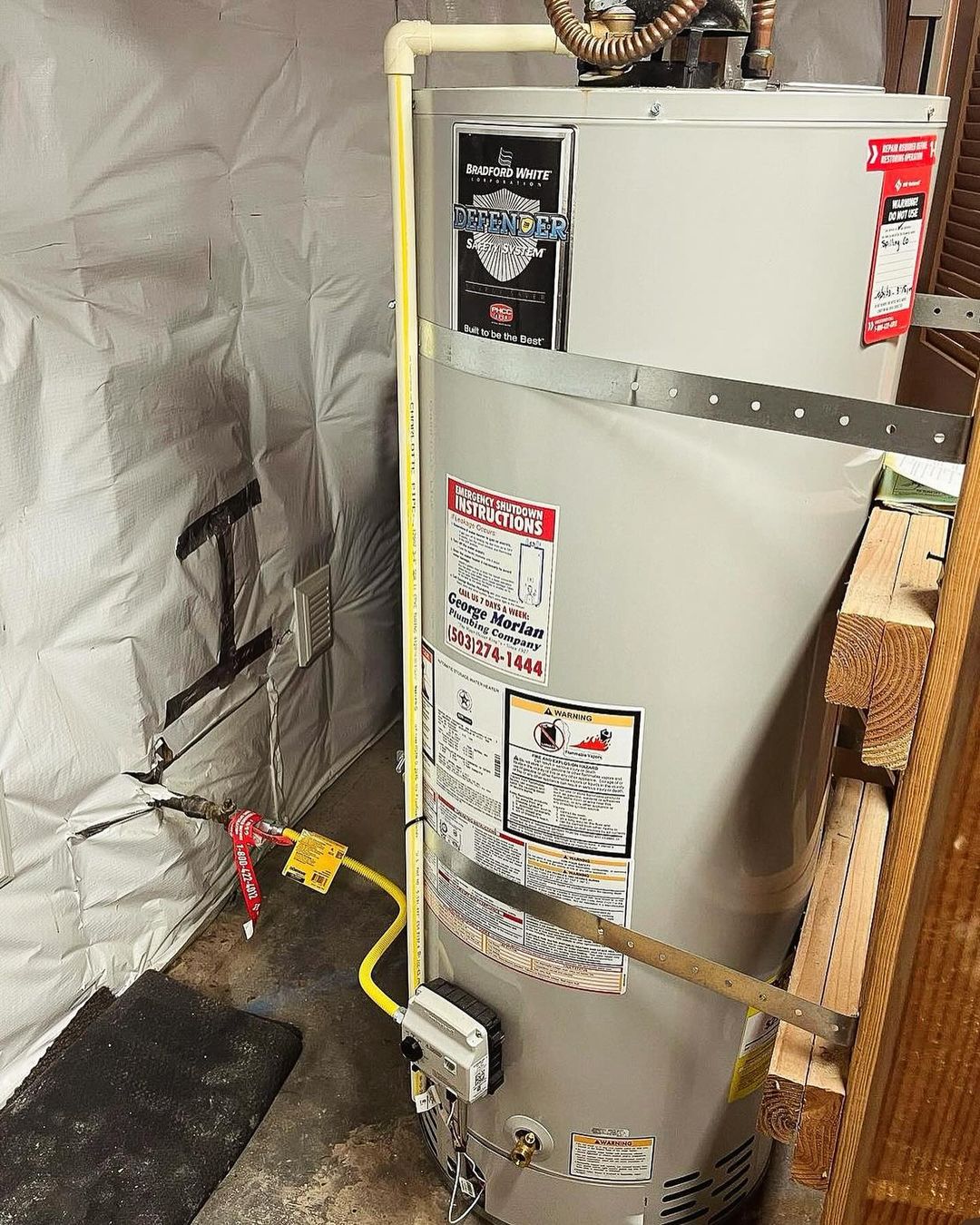
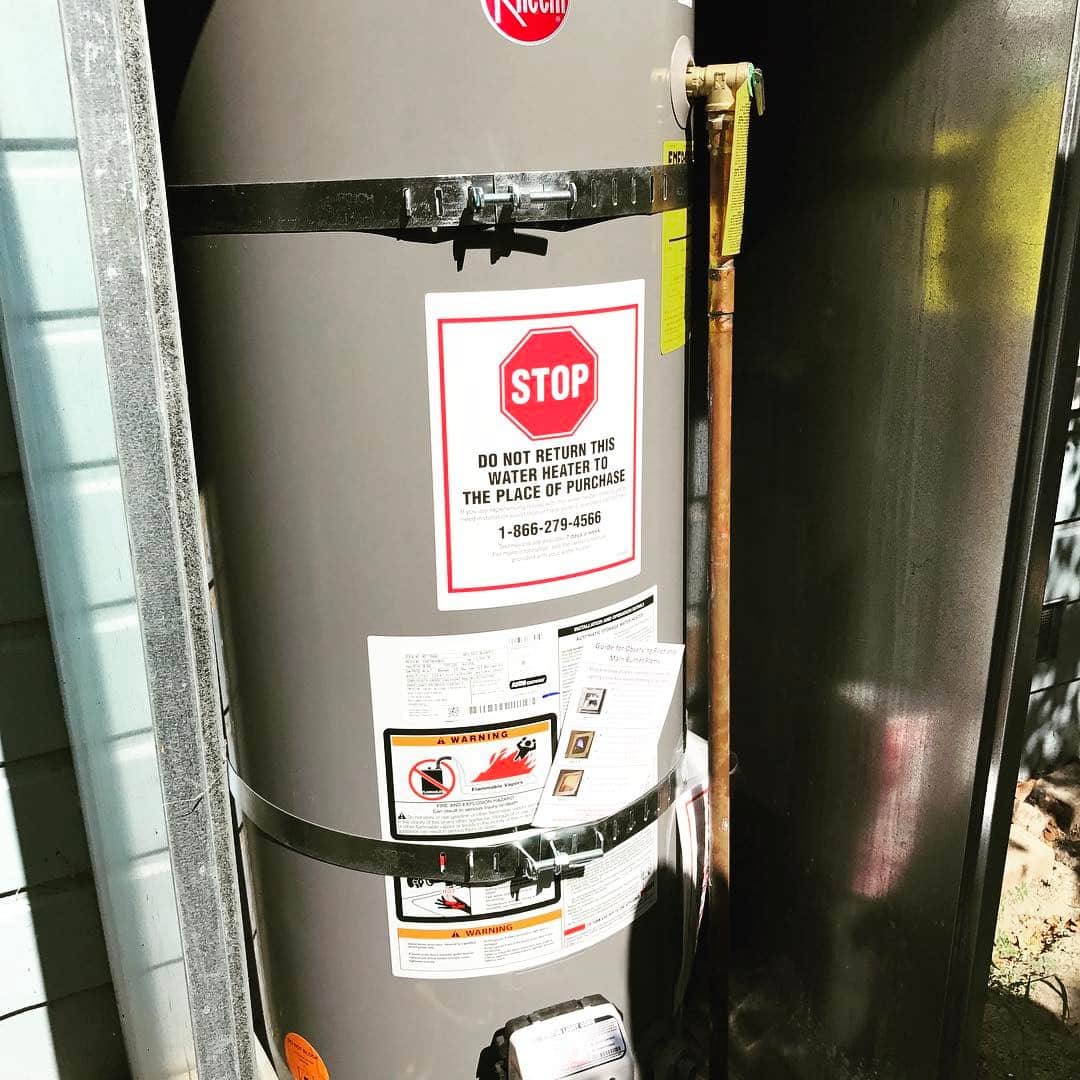
Hot water heater strapping involves securing the water heater with metal straps that are anchored to wall studs or masonry. Keep in mind that the point of this is primarily for the water heater to “resist horizontal displacement”. The water heater should be strapped so that in an earthquake they cannot shift or move in any direction. Remember, they weigh a lot (500 pounds plus) and if there is any wiggle room in the straps the anchors could rip right out during an earthquake.
If you notice that your water heater straps are slightly loose and there is no more room left to tighten them, placing a block of wood under the strap and retightening can remedy the issue.
The process to install straps typically includes:
- Placement of Straps: Two heavy-duty metal straps are placed around the water heater, one at the top third and another at the bottom third of the tank. The bottom strap on a water heater should be a minimum of 4 inches above the gas valve / controls. If the existing strapping is not 4 inches above this on your existing water heater, then make sure to move the strap up. It’s crucial that these straps are positioned correctly to provide maximum stability. Make sure to check your local building codes as well as the manufacturer’s recommendations prior to installation. HoldRite is a popular brand for straps, see their instructions.
- Anchoring: The straps are then anchored to the wall studs or masonry using bolts or screws. In some cases, additional blocking may be required to provide a solid anchoring point, especially in homes with non-standard framing or construction materials.
- Adjustment for Tension: Once anchored, the straps are tightened to ensure the water heater is securely fastened to the wall. Care must be taken to avoid over-tightening, which can damage the water heater or the anchoring surfaces.

When More Than 2 Straps May Be Required
Water heaters may require three, four, ore more straps based on their height and capacity, as well as local building codes that dictate the specific requirements for seismic strapping. The need for additional straps is typically due to capacity (gallons) and/or height of the water heater. Taller water heaters, typically those over 55 inches in height, are more prone to tipping over during seismic events. To ensure stability, local codes may require an extra strap for every additional 24 to 32 inches of height beyond a certain threshold. For example, a water heater that is significantly taller than average might need a third strap positioned around the middle to evenly distribute the force and prevent tilting or toppling. Water heaters with more than 53 gallon capacity often require additional straps.
Strapping with a Water Heater Blanket or Insulation
Usually if you have a blanket or other type of insulation on your water heater the straps used to secure the water heater need to be placed over the insulation blanket. This ensures that the straps are effective in holding the water heater in place during seismic activity. The straps should still be positioned at the recommended heights.
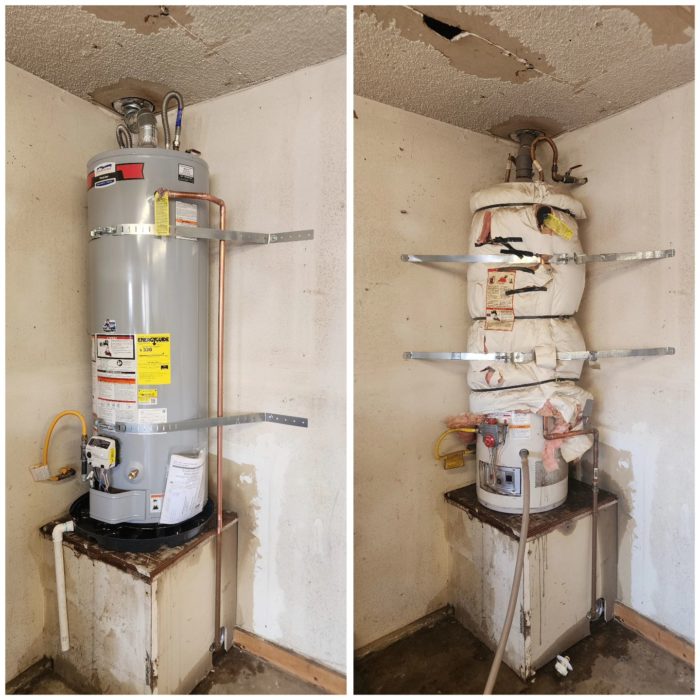
When strapping a water heater with an insulation blanket, care must be taken to tighten the straps adequately without compressing the insulation too much. Over-tightening can compromise the effectiveness of the insulation blanket by squishing it excessively, which could reduce its insulating properties. It’s a balance between securing the water heater firmly and maintaining the integrity of the insulation.
Installing a water heater blanket and straps also requires careful planning to ensure that access to the thermostat, controls, and drainage points is not obstructed. The straps should be positioned in a way that allows easy access to these essential components for maintenance, adjustment, and emergency shutoff. Remember, it is important to always follow the water heater manufacturer’s guidelines and local building codes when installing an insulation blanket and strapping the unit. Some manufacturers provide specific instructions for installing blankets and straps on their products, including recommended materials and methods that won’t impede the water heater’s performance or safety features.
Where is Hot Water Heater Strapping Required or Needed?
Hot water heater strapping is most commonly required in regions prone to earthquakes, such as the west coast of the United States, California, Washington, and Oregon. California, for instance, has specific regulations under the California Plumbing Code (CPC) that mandate the strapping of water heaters in both residential and commercial buildings. These requirements are part of broader seismic safety measures designed to minimize damage and injuries during an earthquake. See San Diego County, California’s water heater code requirements as an example.
While the necessity for hot water heater strapping is most pronounced in earthquake-prone areas, it’s a good safety measure for homeowners to consider regardless of their location. The practice can prevent accidents related to tipping water heaters, which can occur due to various reasons beyond seismic activity, such as uneven floors or accidental impacts.

Summary about Earthquake Strapping for Water Heaters
Hot water heater strapping is a critical safety measure that protects homes and their inhabitants from the potential hazards posed by unsecured water heaters, especially during seismic events. Homeowners and buyers, especially those in earthquake-prone regions, should ensure their hot water heaters are properly strapped and compliant with local building codes. Not only does this safeguard against physical and property damage during an earthquake, but it also ensures that homes meet safety standards that can impact insurance coverage and property values.


